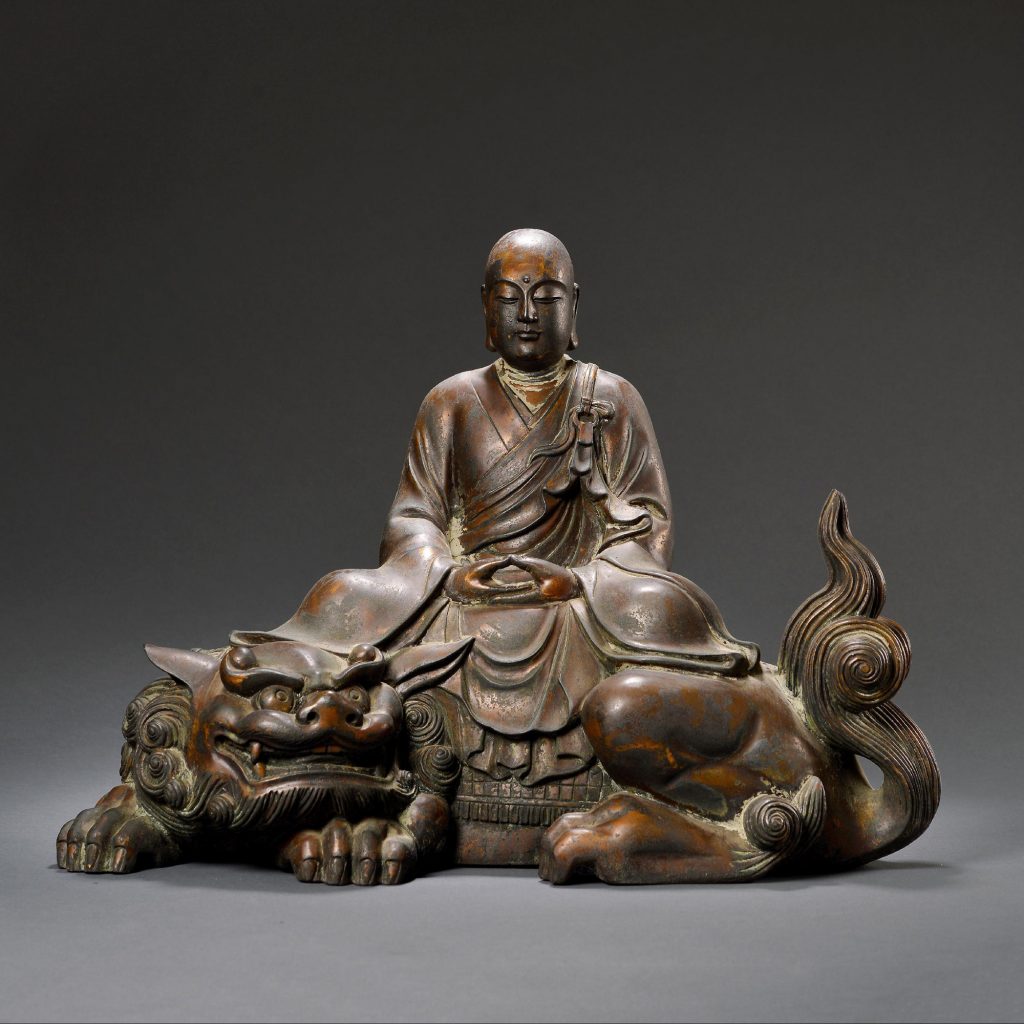The Chinese name of Avalokiteshvara, as we saw in the previous post, is 觀自在. But the Chinese title of Avalokiteshvara is the next two words on the second line of the Heart Sutra: 菩薩. Here is the whole second line, with these two characters in red:
觀 自 在 菩 薩 行 深 般 若
kwan ja jae bo sal haeng shim ban ya
avalokiteshvavra bodhisattva practice deep prajna
This is another example of using Chinese characters to transliterate a Sanskrit Buddhist term. In Sanskrit the word is बोधिसत्त्व, transliterated/romanized as “Bodhisattva” for English speakers. In Chinese this becomes: 菩薩 (pú-sà). Obviously this is pretty free (one might almost say loosey-goosey) as far as transliterations go. We’ve already noted the tendency sometimes seen in Chinese to transform “ah” into “oh” or some other vowel. But here the vowels are left pretty much alone – but the whole word is not so much shortened as it is chopped clean in half. In point of fact, it is cut into quarters, and then the second and fourth parts (dhi and ttva) are discarded while the first and third parts (bo and sa).
Unlike many other characters used to transliterate Sanskrit Buddhist terms, 菩 (pú) and 薩 (sà) don’t appear (as far as I have been able to discover) to have any other usage/meaning in the Chinese language. 菩 is sometimes found on it’s own, but even then it is used as an every shorter abbreviation for Bodhisattva!

